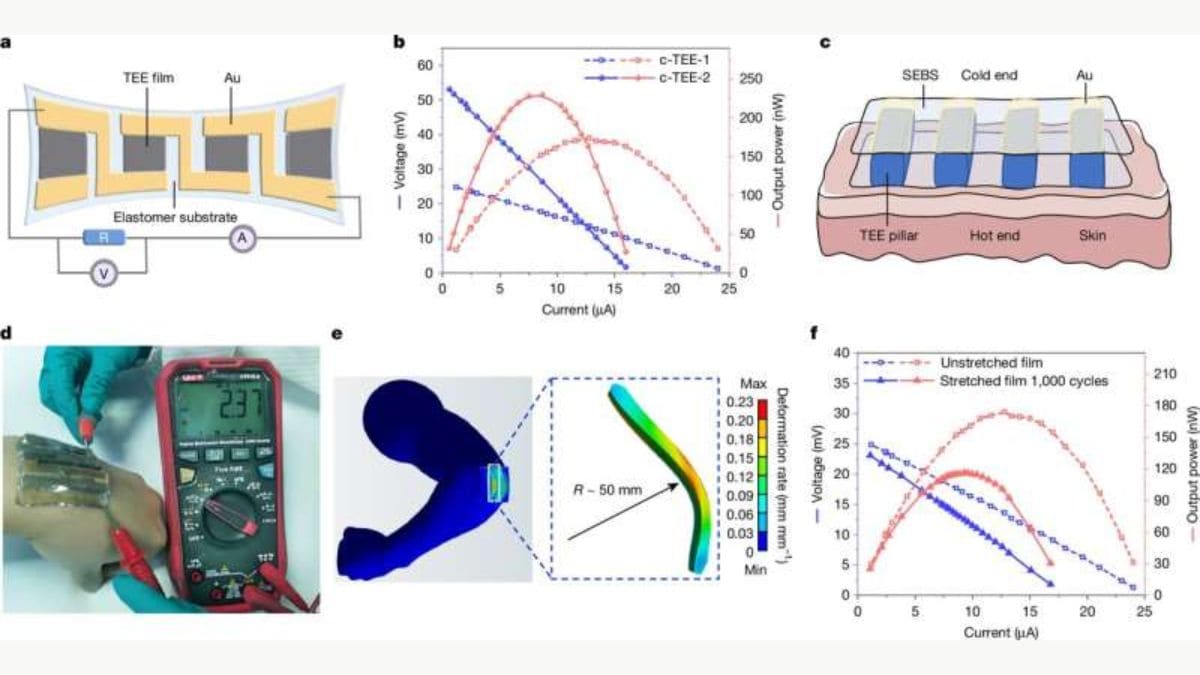
"According to the study published in the Nature journal, the team of researchers analysed how thermoelectricity, the movement of electrons from hot to cooler regions, can be harnessed using their elastic polymer composite. They reported that the material can stretch to 150 percent of its initial length and withstand strains of more than 850percent. The fact that it remains stretched under stress means it remains in close contact with the skin, and that makes power generation more efficient, the researchers said."
"The fact that it remains stretched under stress means it remains in close contact with the skin, and that makes power generation more efficient, the researchers said. The elastomer was made even more effective - more conductive - by adding a special doping agent called N-DMBI. n-Type thermoelectric elastomers with the characteristics of high mobility and good flexibility have been a big step toward gaining high performance, reported Tech Xplore."
A stretchy, rubber-like elastomer converts the temperature difference between human skin (about 37°C) and surrounding air into continuous electricity. The elastomer maintains skin-like stretchiness and stays in close contact with skin even under large strains, improving power generation efficiency. The material can stretch to 150 percent of its initial length and withstand strains exceeding 850 percent while retaining performance. Conductivity and n-type thermoelectric behavior are enhanced by doping with N-DMBI, producing high mobility and flexibility suitable for wearables and implantable sensors that could operate without conventional batteries.
Read at Gadgets 360
Unable to calculate read time
Collection
[
|
...
]